There are so many pirogi dough and filling recipes out there, it's hard to know which is the best. I have made the dough using various recipes and I never find a huge difference - so I go with the one that uses the smallest amount of precious sour cream. Pirogi dough is quite soft and can be difficult to work with a pasta machine, but I am allergic to hand-rolling so next time I might try adding a bit of besan to make it easier to work with. For now, though, here is the recipe - it takes about three hours if you're quick and makes about 40 pirogies:
Note: You need a LOT of onions for this recipe - have at least 1 kg on hand per 20 pierogies.
Ingredients for the filling:
- 6 medium potatoes (any potato that is good for mashing will do)
- 3 small onions
- 1 heaping tbsp vegan sour cream
- 2 tsp salt (more to taste)
- 1 tsp black pepper (more to taste)
Peel and cut the potatoes so that each potato is cut into 12 pieces. Boil them until tender. While the potatoes are boiling, mince the onions and cook them in a small pan. I like to cook them until they are "sweaty" - basically, not raw but not yet starting to turn brown. Once the potatoes are done, drain them and mash them. Add the sour cream, salt and pepper and mash mash mash! Once nice and smooth, add the onions and stir them in until well combined. Taste the filling and add more salt and pepper if needed. Set aside to cool.
- 3 tbsp canola oil
- 1 cup warm water
- 3 cups AP flour (plus a lot extra to use while rolling)
- 1 tsp salt
Sift or mix the flour to get the lumps out, add the salt and then the wet ingredients. Mix until well combined. Knead a little bit until the dough is well held together. The dough needn't be smooth and should be a bit sticky. Place in a covered bowl and set aside for at least half an hour.
Next, you need to dice a mountain of onions. You can do it by hand, or if you are lucky you will have one of these to use:
Dice 6-7 small to medium sized onions and set aside. If you have a 1kg bag of onions, use the three smallest for the filling and the rest for the "sauce" - this is enough for 20 pirogies. If you will be eating more (rather than freezing leftovers for later) you will need more onions.
Next, roll out your dough (I use a pasta machine up to level 3). Basically, it should be thicker than pasta dough but thinner than pizza crust. Cut holes in the dough of about 3.5" in diameter. If you have a dumpling maker (a set of three is a whole $2.50 at most $2 shops) use that, otherwise you can make the pirogis by hand using a fork to crimp the edges. If you have a dumpling maker, stretch the sides of the dough to the edges and place a heaping teaspoon of filling in the middle. Fold inside, press tightly, open, and pull out the pirogi.
Set your pierogis aside on a floured sheet.
Once your pirogies are all folded (or if you're good at multi-tasking, once they're 3/4 done), put your onions in a large pan on medium heat with about two heaping tablespoons of melted Nuttelex (don't worry, you can add more later!)
Put on a large pot of boiling water. Once your onions have started to brown is when the pirogies should go into the pot. Cook them up to eight at a time for about three minutes. Do not judge their doneness by if they float or not - it's better to have a taste of a corner if you're unsure. Throw a bit more Nuttelex into your pan before you add the pirogies, then fish them out of the boiling water with a slotted spoon and put in the pan with the onions.
Cook until the onions are nice and caramelised and the pirogies are crispy and golden brown on each side. Salt and pepper well.
Freeze any uncooked pirogis on the floured sheet, then, when frozen, remove and chuck into a container and put back in the freezer. this way your pirogies won't freeze together and break off when you want to cook them.
Serve your pirogies with a giant spoonful of sour cream and a bit of extra pepper (and salt if necessary) and a side of something healthy, like broccoli.

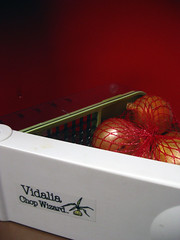
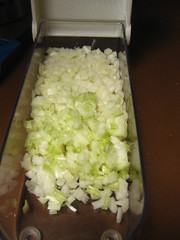
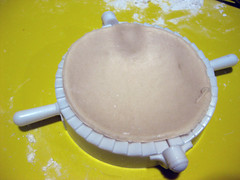

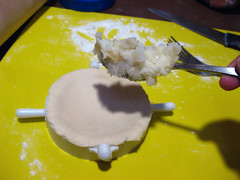
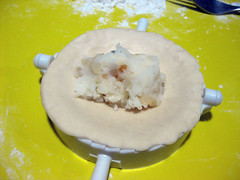
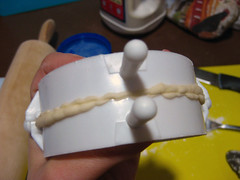
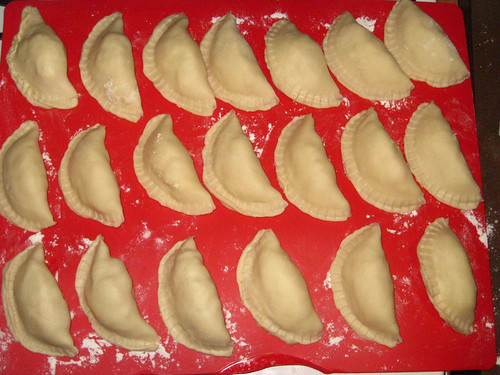
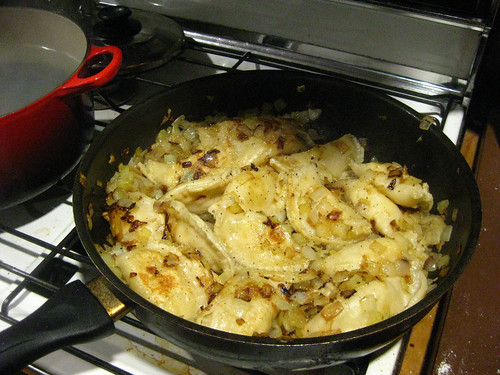
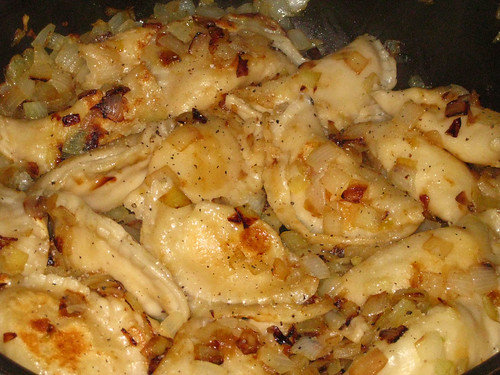
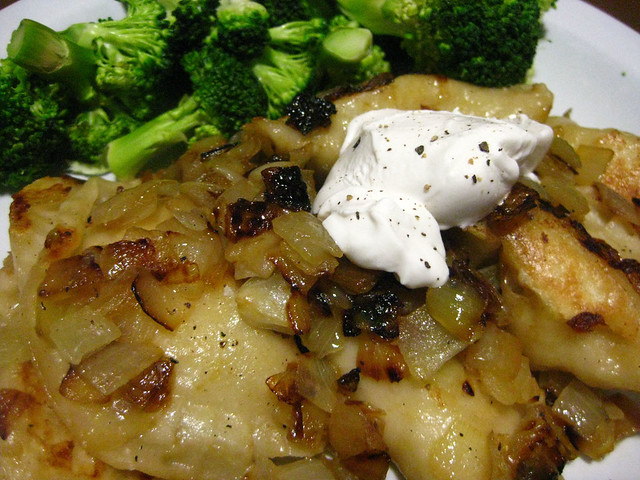
Starchy goodness! I don't have pierogies very often, but they are so good for filling me up and warming me up.
ReplyDeleteThey look fantastic! I have been meaning to try pirogies for ages but the lengthy preparation always puts me off. Those dumpling presses are such handy tools.
ReplyDeleteThey look so good and your onion chopping gadget is impressive!
ReplyDeleteAnd you can get plantains here but they can be hard to find, I am sure some of the Melb. vegans will know where to find them.
these look amazing - I love dumplings and am impressed you made your own skins - I have only had pierogi made by a friend who got the recipe from a polish friend and it is yeasted dough and baked - quite different to most pierogis on the web
ReplyDeleteI *love* pierogies. Quite some work to make yourself, but I can only imagine they taste amazing.
ReplyDeleteI've always wanted to try pirogies, this recipe looks lovely. I like your tip about dumpling makers - I'll definitely keep an eye out for one of those.
ReplyDeletethese look pretty great (coming from a gal who has a Polish Pops)! I love pierogi (no need for the 's' at the end pierogi is the plural form of pieróg-fun Polish food fact) and love converting old Polish family faves to vegan recipes I can enjoy! Good work!!! :D
ReplyDelete